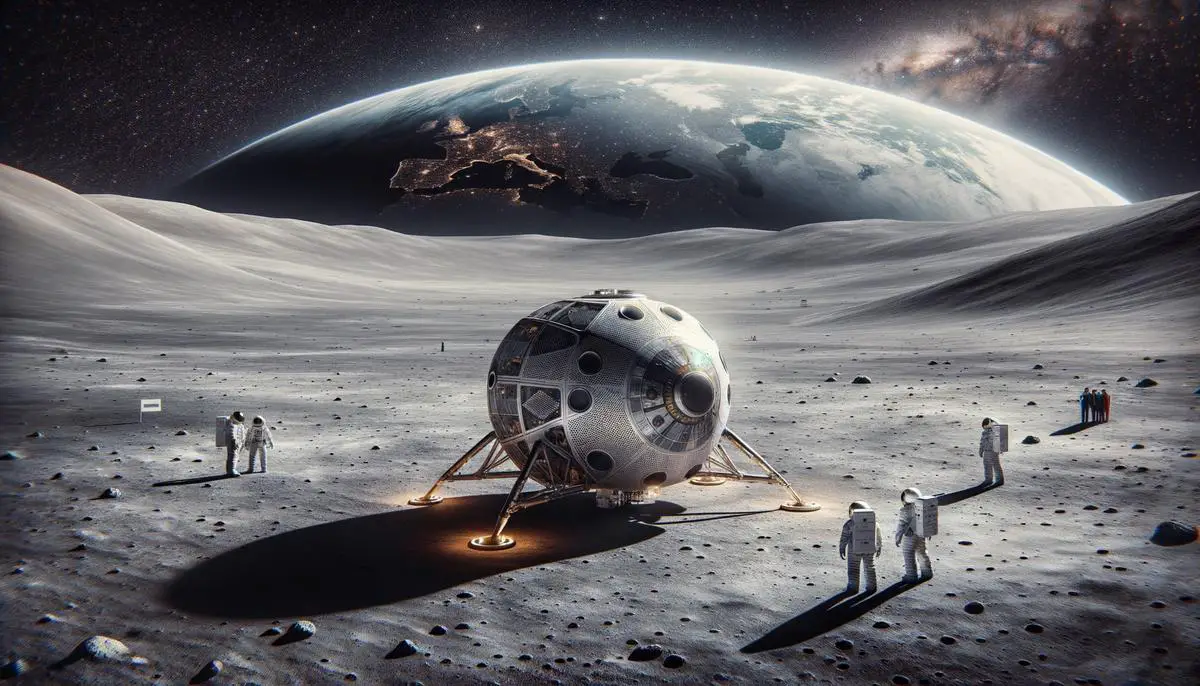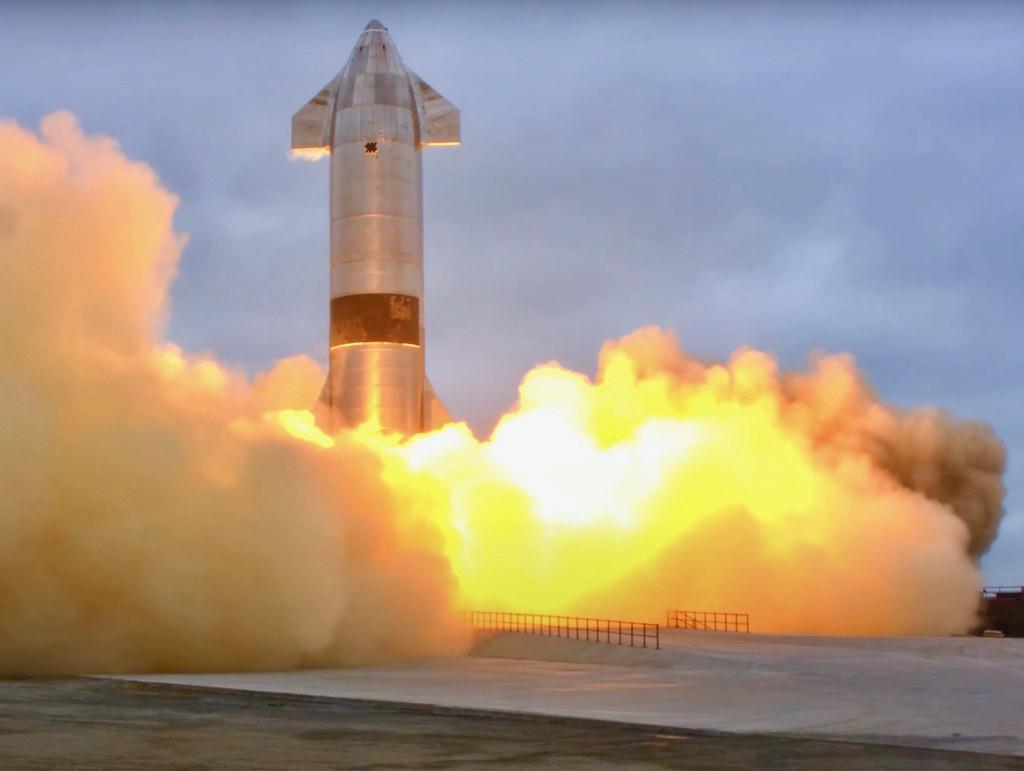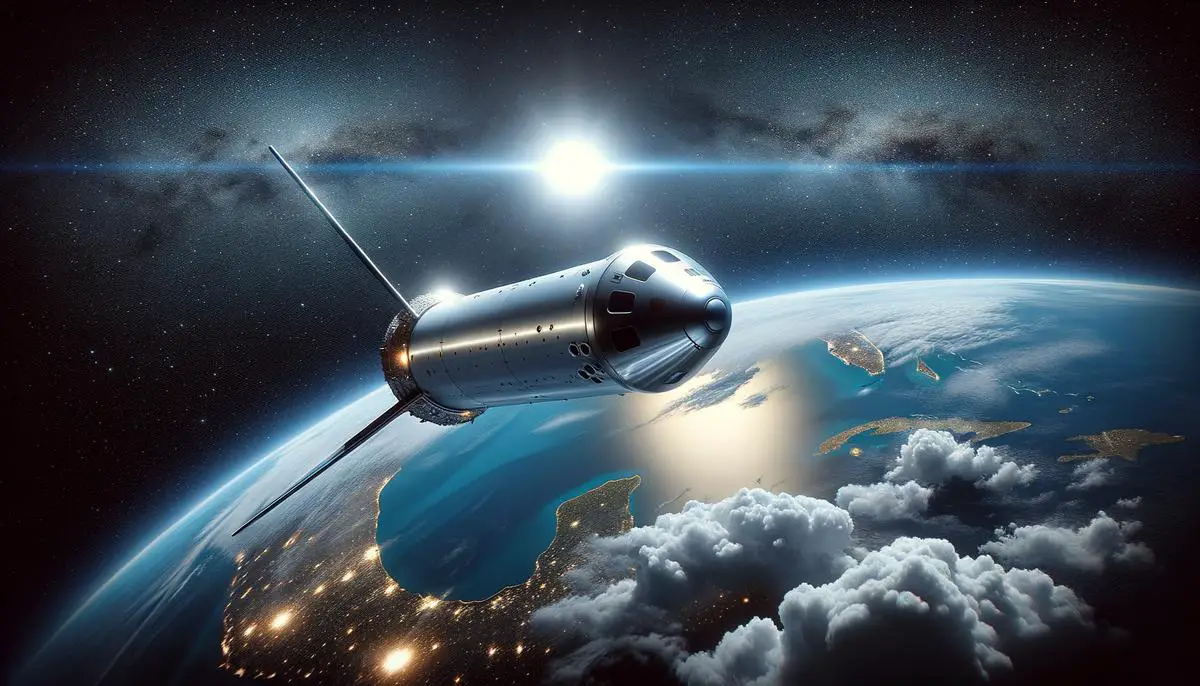Starship Development and Design
SpaceX's Starship development has been characterized by continuous innovation and adaptation. The project aims to create a fully reusable rocket for sustainable and cost-effective human space travel. Initially known by various names, Starship's architecture consists of two stages: the Super Heavy booster and the Starship vehicle.
Starship utilizes SpaceX's Raptor engines, which burn liquid methane and oxygen, enabling in-space refueling possibilities. The shift from carbon composite to stainless steel construction improved durability, particularly for extreme re-entry temperatures.
The evolution began with Starhopper, progressing through various prototypes and tests. Significant milestones included:
- Serial Number 5's successful 150-meter hop
- Serial Number 15's intact landing
- The first integrated flight of Super Heavy and Starship on April 20, 2023
Launch infrastructure development has been crucial, with the Orbital Launch Mount (OLM) at Starbase in Boca Chica, Texas, designed to handle the thrust of 33 Raptor engines. Innovations like the water-cooled steel plate at the OLM's base address challenges in launch pad design.
Future launch sites at Kennedy Space Center and expanded facilities at Starbase aim to enhance Starship's capabilities. This ongoing development brings humanity closer to the goal of interplanetary travel, showcasing SpaceX's innovative approach to space exploration.

Lunar Exploration and NASA Collaboration
SpaceX's collaboration with NASA for the Artemis program marks a significant advancement in lunar exploration. Starship serves as the lunar lander, offering spacious accommodations and advanced systems for extended missions. Its large payload capacity enables comprehensive lunar exploration by transporting essential equipment and habitats.
The Artemis missions involve intricate steps, including:
- Starship docking with NASA's Orion spacecraft in lunar orbit
- Facilitating astronaut transfers
- Landing on the lunar surface
SpaceX envisions Starship as a mobile habitat and orbital platform, supporting long-term missions and scientific studies.
Starship's reusability is a key innovation, reducing costs and increasing mission frequency. This efficiency aligns with NASA's goals of maintaining a continuous human presence on the lunar surface.
The partnership fosters advancements in space infrastructure, with rigorous environmental reviews and licensing processes ensuring regulatory compliance. Innovations in launch pad design, such as the water-cooled steel plate at the OLM, enhance the durability and reliability of future lunar launches.
This collaboration between SpaceX and NASA exemplifies the transformative potential of commercial partnerships in space exploration, paving the way for a sustained human presence on the Moon.

Environmental and Logistical Challenges
SpaceX's operations, particularly at Boca Chica, require rigorous environmental assessments and regulatory compliance. The Federal Aviation Administration (FAA) conducted a Programmatic Environmental Assessment, resulting in a Mitigated Finding of No Significant Impact with specific measures to protect wildlife and historical sites.
Technical challenges in launch infrastructure construction have been significant. The high water table at Boca Chica necessitated extensive soil reinforcement. The management of exhaust and heat from Starship's 33 Raptor engines posed a unique challenge, leading to the implementation of an innovative water-cooled steel plate at the Orbital Launch Mount's base.
"Aspiring to have no flame diverter in Boca, but this could turn out to be a mistake." – Elon Musk, October 2020
This plate, designed to disperse large volumes of water during engine ignition, effectively mitigates heat and shockwaves. Additional protections for sensitive equipment reflect lessons learned from early flights, demonstrating SpaceX's commitment to iterative improvements.
As SpaceX develops additional launch sites, such as those at Kennedy Space Center, the experiences and technologies from Boca Chica will inform future infrastructure design. This approach balances technological ambition with environmental stewardship, illustrating a pathway for sustainable aerospace development.

Future Mars Missions
SpaceX's vision for Mars colonization centers on the Starship vehicle. The company plans to begin with uncrewed missions within the next two years, leveraging Earth-Mars orbital alignments for optimal launch windows. These initial flights will assess landing procedures and test infrastructure deployment capabilities on Mars.
Starship's substantial payload capacity of over 100 metric tons per flight is crucial for transporting essential equipment, habitats, and supplies needed for early Martian outposts. The vehicle's reusability is key to reducing costs and enabling frequent launches, supporting sustained resource and personnel flow between Earth and Mars.
| Mission Phase | Timeline | Objective |
|---|---|---|
| Uncrewed Missions | Within 2 years | Landing procedures, infrastructure deployment |
| First Crewed Flights | Within 4 years | Validating life-support systems, human habitation |
| Self-Sustaining City | Within 20 years | Establish significant population, ensure continuity |
SpaceX aims to launch the first crewed flights to Mars within four years, pending successful preliminary tests. These missions will focus on validating life-support systems and human habitation modules.
The long-term goal is to establish a self-sustaining Martian city, supporting significant populations and ensuring the continuation of human consciousness beyond Earth. This vision involves developing large Starship fleets for routine interplanetary travel, gradually transitioning from exploration to colonization.
SpaceX's progress in Mars colonization, driven by Starship's capabilities and ambitious goals, represents a significant step towards making humanity a multiplanetary species. This initiative promises to open an extraordinary chapter in human history, extending our presence into the solar system.
Starship's Impact on Space Exploration
Starship's influence on space exploration is significant, offering potential across multiple areas, from reducing costs to increasing accessibility for tourism and scientific missions. The Starship's development is important in shaping the future of space travel by addressing traditional challenges and expanding possibilities.
A key implication of Starship is its capacity to reduce space mission costs. Historically, high expenses for launching payloads into space have limited broader exploration and utilization. Starship's fully reusable design aims to minimize launch expenses dramatically. This reduction could enable more frequent and affordable space missions for government, commercial, and research purposes.
The economic model advanced by Starship includes:
- Economies of scale
- Mass production
- Rapid launch turnaround times
This affordability could increase access to space for smaller nations, private companies, academic institutions, and individuals, fostering innovation through competition and collaboration.
Space tourism stands to benefit from Starship's reusability and cost-effectiveness. SpaceX plans to send private citizens to space, potentially making space tourism a reality. Starship's capabilities could offer more affordable trips to low Earth orbit and longer journeys to the Moon and possibly Mars.
Reusable launch vehicles like Starship also present new opportunities for scientific missions. With lower costs and greater payload capacity, scientific institutions could launch multiple missions to study various aspects of space. This flexibility allows for more comprehensive research, accelerating our understanding of the universe.
The competitive advantage of reusable launch vehicles is evident in their potential to redefine commercial missions. Consistent and reliable space access can support satellite constellation deployment, enhancing global communication networks, Earth observation, and space-based data services. Businesses can innovate, knowing they have a dependable and cost-efficient method to deploy and maintain space assets.
The effects extend to critical sectors like climate science and natural resource management. An affordable space fleet can host numerous Earth observation satellites, providing high-resolution, real-time data on climate patterns, disaster response, agriculture, and environmental conservation efforts.
"Ultimately I think we want to build a Moon Base Alpha, and have a permanently occupied base on the Moon." – Elon Musk
Starship's potential to advance space exploration is complemented by SpaceX's strategic mission to improve reusable launch technology. The shift from limited missions to sustainable, ongoing operations expands the possibilities for human achievement in space.
As Starship continues to develop and prove its capabilities, it may significantly influence the landscape of space travel, economic opportunity, and scientific discovery, marking a step towards humanity's interplanetary aspirations.

Through persistent development, SpaceX's Starship has brought humanity closer to interplanetary travel. The journey from initial concepts to the verge of operational missions demonstrates the innovative approach central to SpaceX's mission. The future of space exploration looks promising, driven by Starship's evolving design and ambitious goals.
SpaceX aims to begin uncrewed Mars missions with Starship as early as 2026, followed by crewed flights in 2028. These timelines reflect the company's accelerated approach to space exploration and colonization. Elon Musk envisions exponential growth in flight rates, with the ultimate goal of establishing a self-sustaining city on Mars within about 20 years.
Key milestones in Starship's development include:
- Four integrated test flights completed by June 2024
- Planned attempt to land Super Heavy back on the launch mount
- Targeted uncrewed Mars landings in 2026
- Projected first crewed Mars missions in 2028
As Starship progresses, it continues to push the boundaries of space technology and human ambition. The success of this program could mark a new era in space exploration, potentially transforming humanity into a multi-planetary species.
![]()
